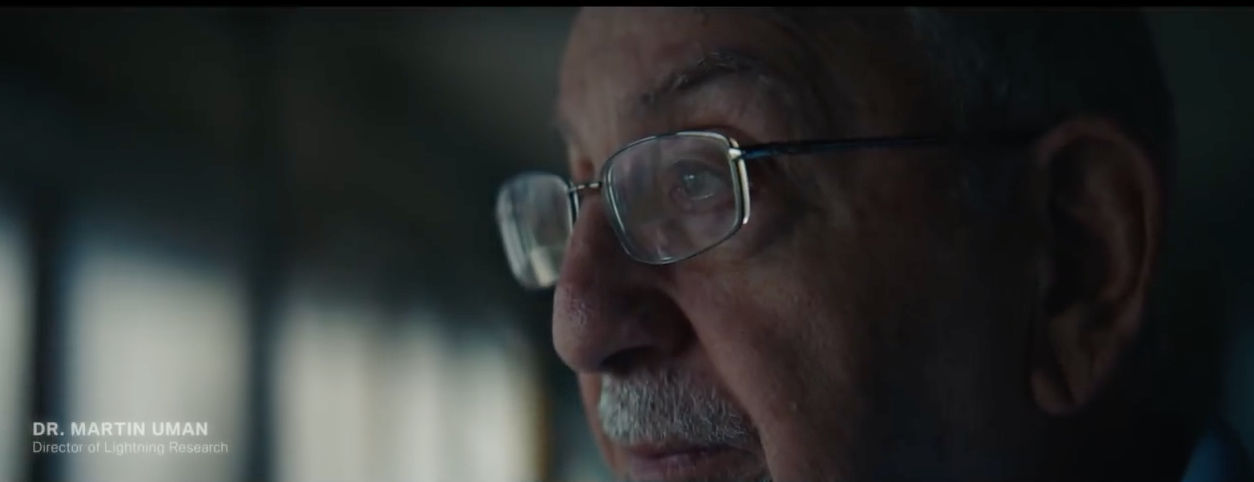“Research Highlights from the ICLRT at Camp Blanding”
Thursday, Feb. 15 at 11:45 a.m.
Larsen 310
Add to Google Calendar
Add to Apple Calendar (.ics)
Abstract
The International Center for Lightning Research and Testing at Camp Blanding (ICLRT)
is a research facility located in north-central Florida where both natural and “triggered” lightning have been studied since 1994. Triggered lightning is upward-initiated lightning similar to most lightning from very tall structures, and is achieved by elevating a grounded wire to a height of the order of 100 m in a time of the order of 1 sec underneath thunderstorm charge. Triggered lightning exhibits many of the processes characteristic of natural lightning and hence allows those processes to be studied in an efficient manner. In this talk, we review selected ICLRT research aimed at understanding triggered lightning itself and at understanding four selected natural lightning processes via triggered lightning measurements. We concentrate on “firsts” and “significant advancements” made at the I CLRT during the last two decades. During most of that period, the ICLRT was jointly operated by the University of Florida and the Florida Institute of Technology. We focus on the five areas of study noted below, but we do not attempt complete coverage of any of these five topics, only the presentation of “firsts” and “significant advancements” along with selected journal papers that have led to further research at the ICLRT and elsewhere:
Biography
Martin A. Uman received his bachelor’s, master’s, and doctoral degrees in Electrical Engineering from Princeton University, the latter in 1961.
Dr. Uman’s first position after graduate school was Associate Professor of Electrical Engineering at the University of Arizona where he first became interested in lightning.
In 1965, he joined the staff of the Westinghouse Research Laboratories in Pittsburgh where he studied the physical and electromagnetic aspects of lightning and long laboratory sparks. Dr. Uman became Professor at the University of Florida in 1971. He has been Director of the UF Lightning Research Laboratory since 1972. He co-founded and served as President of Lightning Location and Protection, Inc. (LLP) from 1975 to 1983. LLP, now a division of Vaisala, developed the lightning locating instrumentation that became the basis for the U. S. National Lightning Detection Network (NLDN). From 1991 to 2003, Dr. Uman was Professor and Chair of the Department of Electrical and Computer Engineering at the University of Florida. Presently, he holds the rank of Distinguished Professor.
Dr. Uman is generally acknowledged to be one of the world’s leading authorities on lightning. He is probably best known for his work in lightning modeling: the application of electromagnetic field theory to the description of various lightning processes. That work, in addition to providing a better understanding of lightning in general, has had a number of important practical spinoffs, the most notable being the LLP lightning locating system and the redefinition of several important lightning characteristics relative to hazard protection. Dr. Uman has authored or co-authored five books on the subject of lightning (the latest in 2008) and a book on plasma physics. He has written seventeen book chapters and encyclopedia articles on lightning, and he has published over 250 papers in reviewed journals and nearly 300 in non-reviewed journals and conference proceedings. He holds seven patents, six in the area of lightning detection and location.
Dr. Uman was the recipient of the 2010 International Conference on Lightning Protection’s Karl Berger Award “for distinguished achievements in the science and engineering of lightning research, developing new fields in theory and practice, modeling and measurements”. Dr. Uman was awarded the 2001 American Geophysical Union John Adam Fleming Medal for original research and technical leadership in geomagnetism, atmospheric electricity, space science, aeronomy, and related sciences for “outstanding contribution to the description and understanding of electricity and magnetism of the earth and its atmosphere.” Dr. Uman was the recipient of the Heinrich Hertz Medal in 1996 by the Institute of Electrical and Electronic Engineers (IEEE) for “…outstanding contributions to the understanding of lightning electromagnetics and its application to lightning detection and protection.” He was named the Florida Scientist of the Year by the Florida Academy of Sciences for 1990 and the 1988-89 University of Florida Teacher-Scholar of the Year, the highest UF faculty award. He is a Fellow of three professional organizations: the IEEE, the American Geophysical Union, and the American Meteorological Society. Other awards include NASA’s 1992 and 1996 Group Achievement Awards to the Galileo Probe Spacecraft Team and three IEEE prize paper awards: the 2001 IEEE Power Engineering Society Surge Protective Devices Committee Prize Paper Award; the Electromagnetic Compatibility Society 1982 Transactions Prize Paper Award; and the Industry Applications Society, Industrial and Power Systems Department, 1994 Ralph H. Lee Prize Paper Award.

